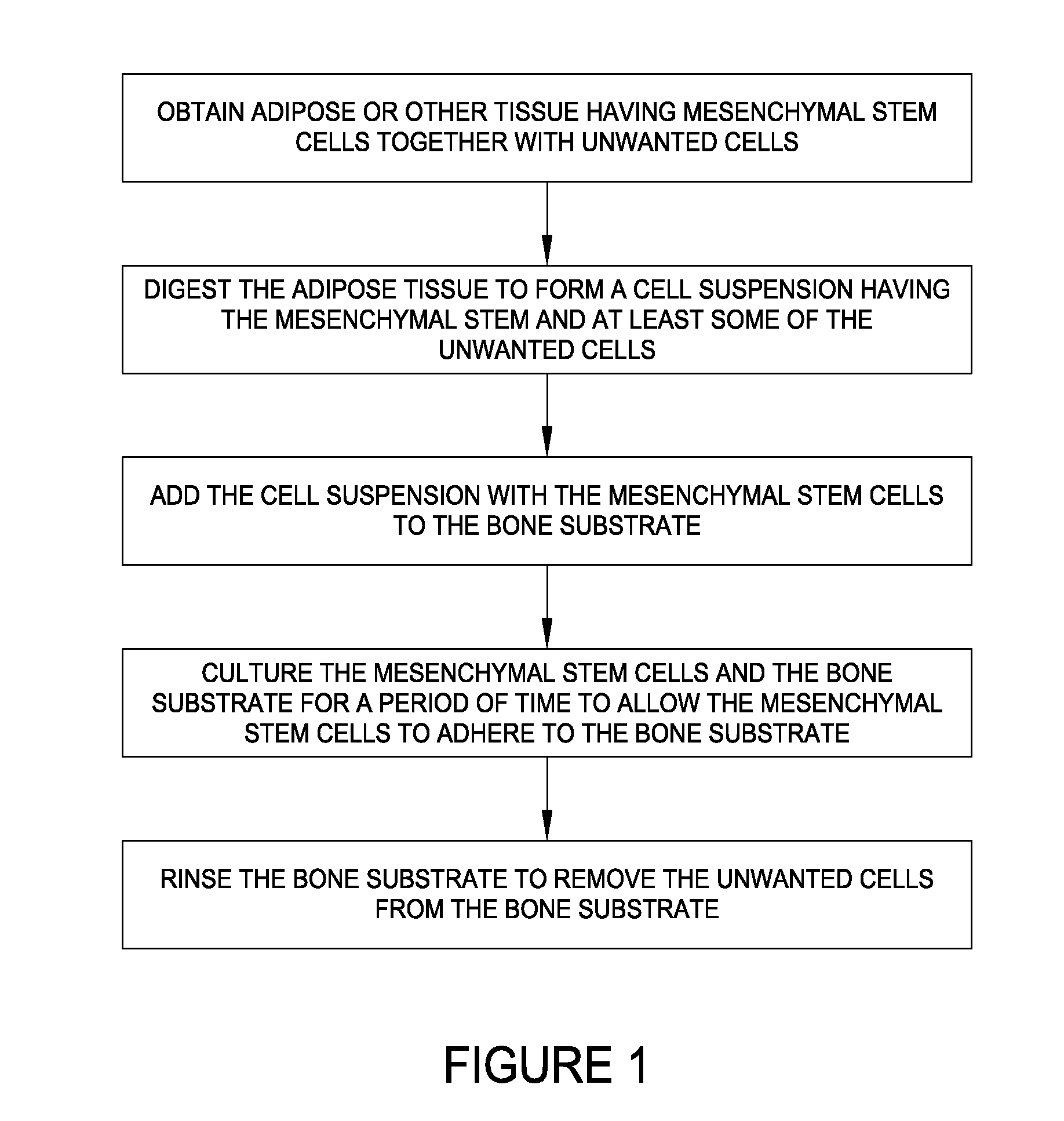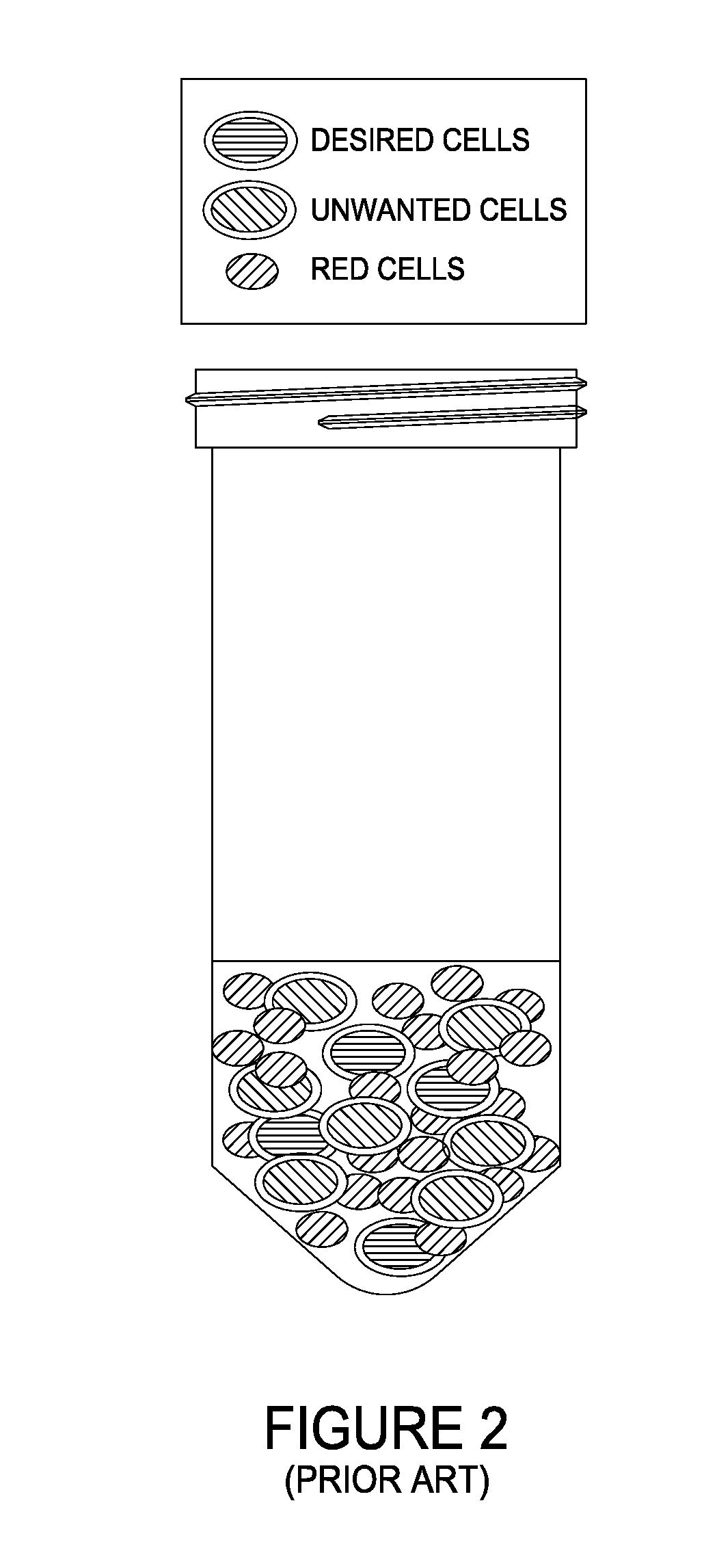Allografts combined with tissue derived stem cells for bone healing
a technology of stem cells and lografts, which is applied in the field of lografts combined with tissue derived stem cells for bone healing, can solve the problems of requiring a significant amount of tissue processing and cellular processing
- Summary
- Abstract
- Description
- Claims
- Application Information
AI Technical Summary
Benefits of technology
Problems solved by technology
Method used
Image
Examples
example 1
Adipose Recovery
[0127]Adipose was recovered from cadaveric donors. Adipose aspirate may be collected using liposuction machine and shipped on wet ice.
[0128]Washing
[0129]Adipose tissue was warmed up in a thermal shaker at RPM=75, 37° C. for 10 min. Adipose was washed with equal volume of pre-warmed phosphate buffered saline (PBS) at 37° C., 1% penicillin / streptomycin. Next, the adipose was agitated to wash the tissue. Phase separation was allowed for about 3 to 5 minutes. The infranatant solution was aspirated. The wash was repeated 3 to 4 times until a clear infranatant solution was obtained.
[0130]The solution was suspended in an equal volume of growth media (DMEM / F12, 10% FBS, 1% penicillin / streptomycin) and stored in a refrigerator at about 4° C.
[0131]Digestion and Combining of Cell Suspension with Allografts
[0132]Digestion of the adipose was undertaken to acquire a stromal vascular fraction (SVF) followed by combining the solution onto an allograft.
[0133]Digestion involved making...
example 2
Adipose Recovery
[0143]Adipose was recovered from cadaveric donors. Adipose aspirate may be collected using liposuction machine and shipped on wet ice.
[0144]Washing
[0145]Adipose tissue was processed in a thermal shaker at RPM=75, 37° C. for 10 min. Adipose was washed with equal volume of pre-warmed phosphate buffered saline (PBS) at 37° C., 1% penicillin / streptomycin. Next, the adipose was agitated to wash the tissue. Phase separation was allowed for about 3 to 5 minutes. The supernatant solution was sucked off. The wash was repeated 3 to 4 times until a clear infranatant solution was obtained.
[0146]Acquire Ficoll Concentrated Stem Cells and Combine onto Allograft
[0147]Ficoll concentrated stem cells were acquired and seeded onto an allograft. 5 ml PBS was placed into the 50 ml tube with cells and 25 ml of 1.073 g / ml Ficoll density solution was added to the bottom of the tube with a pipet.
[0148]The tubes were subjected to centrifugation at 1160 g for 30 min at room temperature and sto...
example 3
[0156]Adipose was recovered from cadaveric donors. Adipose aspirate may be collected using liposuction machine and shipped on wet ice.
[0157]Washing
[0158]The bone marrow sample is washed by adding 6 to 8 volumes of Dulbecco's phosphate buffered saline (D-PBS) in a 50 ml disposable centrifuge, inverting gently and subjecting to centrifugation (800 g for 10 min) to pellet cells to the bottom of the tube.
[0159]Acquire Stem Cells and Combine onto Allograft
[0160]The supernatant is discarded and the cell pellets from all tubes are resuspended in 1-2 ml of growth medium (DMEM, low glucose, with 10% FBS and 1% pen / strap). The cell mixtures are seeded onto allografts. With a few hours of culture in CO2 incubator at 37° C., more growth medium is added. A few days later, the allograft is taken out and rinsed thoroughly in PBS and put into cryopreservation media (10% DMSO, 90% serum) and kept frozen.
PUM
| Property | Measurement | Unit |
|---|---|---|
| density | aaaaa | aaaaa |
| volume | aaaaa | aaaaa |
| volume | aaaaa | aaaaa |
Abstract
Description
Claims
Application Information
 Login to View More
Login to View More - R&D
- Intellectual Property
- Life Sciences
- Materials
- Tech Scout
- Unparalleled Data Quality
- Higher Quality Content
- 60% Fewer Hallucinations
Browse by: Latest US Patents, China's latest patents, Technical Efficacy Thesaurus, Application Domain, Technology Topic, Popular Technical Reports.
© 2025 PatSnap. All rights reserved.Legal|Privacy policy|Modern Slavery Act Transparency Statement|Sitemap|About US| Contact US: help@patsnap.com



